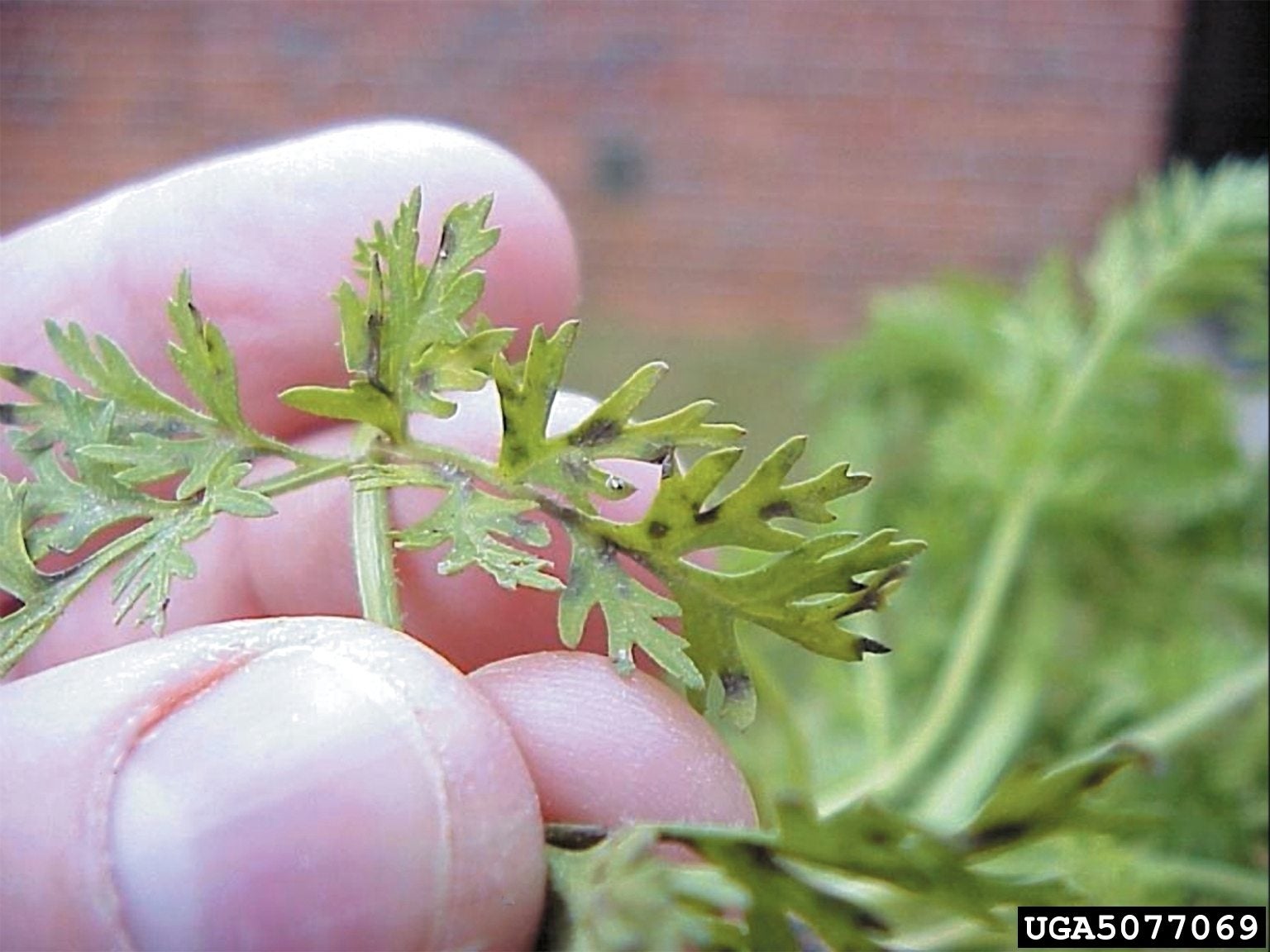Carrot Leaf Blight Control: Treating Leaf Blight In Carrots


Carrot leaf blight is a common problem that can be traced to several different pathogens. Since the source can vary, it’s important to understand what you’re looking at in order to best treat it. Keep reading to learn more about what causes carrot leaf blight and how to manage various carrot leaf blight diseases.
What Causes Carrot Leaf Blight?
Leaf blight in carrots can be grouped into three different categories: alternaria leaf blight, cercospora leaf blight, and bacterial leaf blight. Bacterial leaf blight (Xanthomonas campestris pv. carotae) is a very common disease that thrives and spreads in moist environments. It begins as small, yellow to light brown, angular spots on the edges of the leaves. The underside of the spot has a shiny, varnished quality. With time these spots lengthen, dry out, and deepen to dark brown or black with a water soaked, yellow halo. Leaves may take on a curled shape. Alternaria leaf blight (Alternaria dauci) appears as dark brown to black, irregularly shaped spots with yellow margins. These spots usually appear on the lower leaves of the plant. Cercospora leaf blight (Cercospora carotae) appears as tan, circular spots with sharp, definite borders. All three of these carrot leaf blight diseases can kill the plant if allowed to spread.
Carrot Leaf Blight Control
Of the three carrot leaf blight diseases, bacterial leaf blight is the most serious. The disease can quickly explode into an epidemic in hot, wet conditions, so any evidence of symptoms should lead to immediate treatment. Cercospora and alternaria leaf blight are less critical but should still be treated. They can often all be prevented by encouraging air circulation, avoiding overhead watering, encouraging drainage, and planting certified disease-free seed. Carrots should be planted in rotation and grown in the same spot at most once every three years. Fungicides can be use both to prevent and to treat these diseases.
Gardening tips, videos, info and more delivered right to your inbox!
Sign up for the Gardening Know How newsletter today and receive a free copy of our e-book "How to Grow Delicious Tomatoes".

The only child of a horticulturist and an English teacher, Liz Baessler was destined to become a gardening editor. She has been with Gardening Know how since 2015, and a Senior Editor since 2020. She holds a BA in English from Brandeis University and an MA in English from the University of Geneva, Switzerland. After years of gardening in containers and community garden plots, she finally has a backyard of her own, which she is systematically filling with vegetables and flowers.
-
 Looking For Plants To Give You The Soft And Fuzzies? Try These 5 Fuzzy Leaf Plant Options
Looking For Plants To Give You The Soft And Fuzzies? Try These 5 Fuzzy Leaf Plant OptionsLovers of texture, drama, silver foliage and tactile plants will adore these special sensory garden additions. These fuzzy leaf plant options will leave you all aglow
By Susan Albert
-
 Get Ready For A Summer Of Hummers! Grow These Full Sun Hummingbird Plants and Flowers
Get Ready For A Summer Of Hummers! Grow These Full Sun Hummingbird Plants and FlowersIf you’re lucky enough to enjoy a sunny backyard, make sure you are maxing out on your pollinator opportunities and grow these full sun hummingbird plants and flowers
By Tonya Barnett